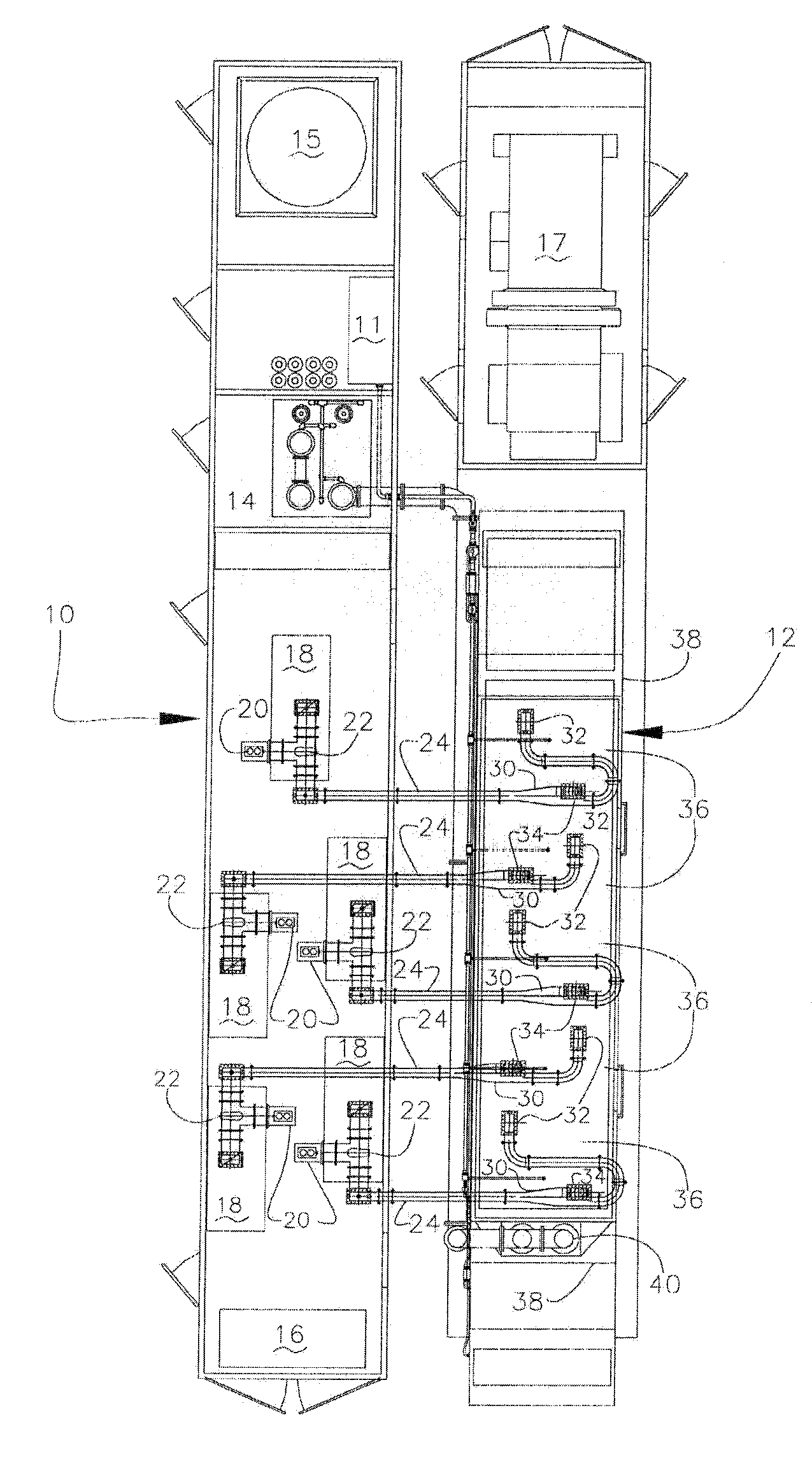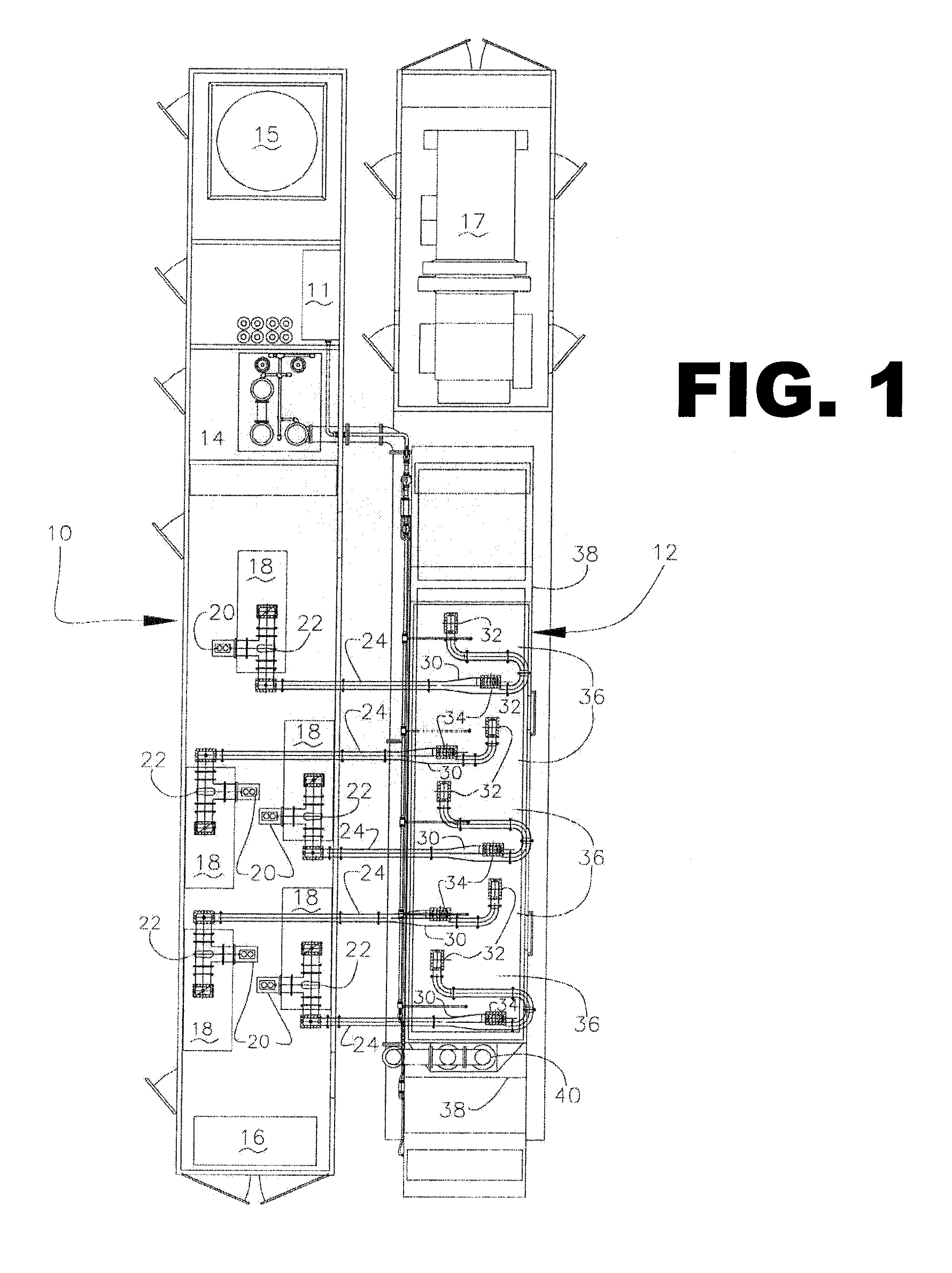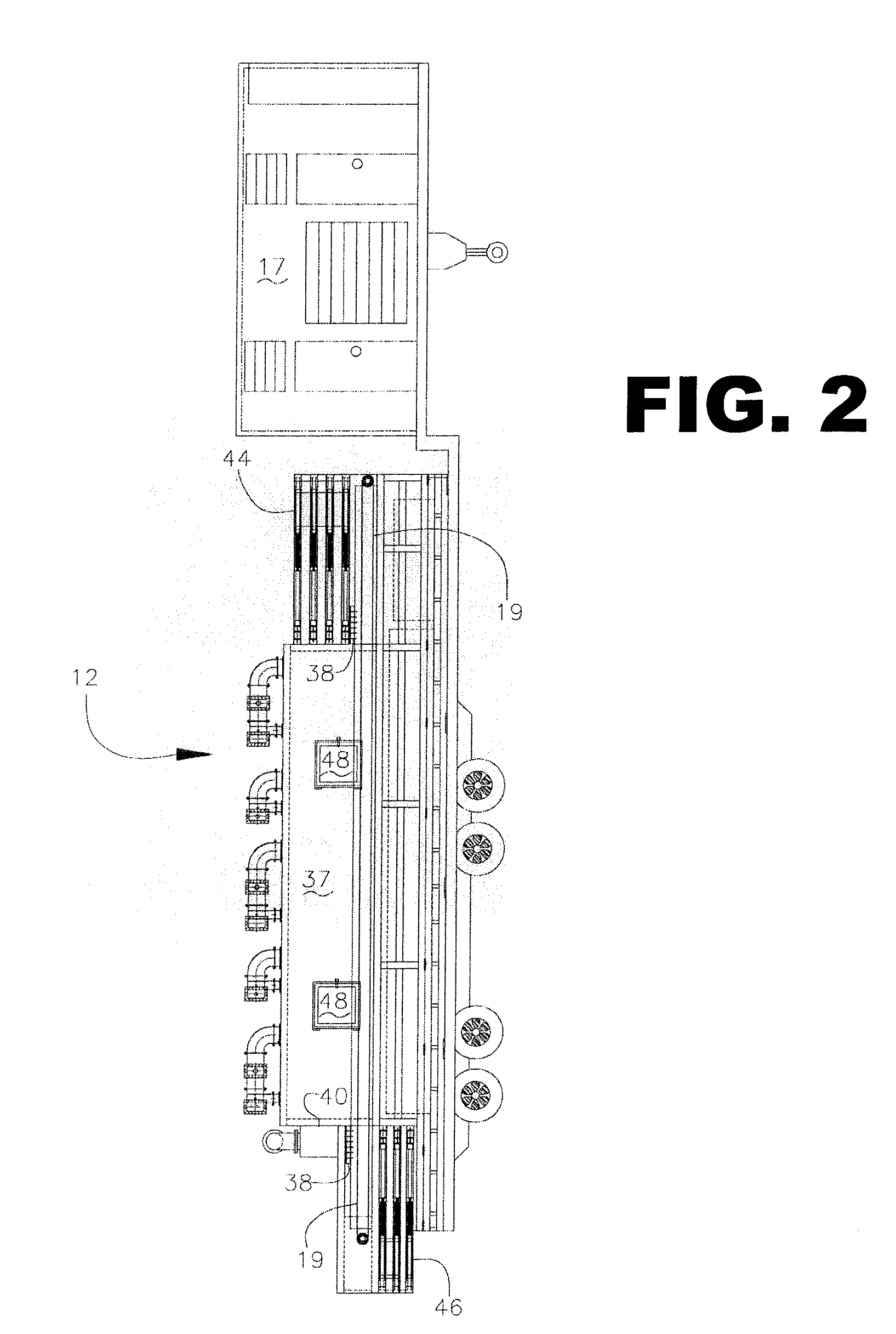Method and Apparatus for Microwave Reduction of Organic Compounds
a technology of organic compounds and microwaves, applied in the field of microwave reduction methods and apparatuses, can solve the problems of increasing the difficulty of refurbishing and replacing costs of these plants, and the cost of energy and capital equipment costs are increasing
- Summary
- Abstract
- Description
- Claims
- Application Information
AI Technical Summary
Benefits of technology
Problems solved by technology
Method used
Image
Examples
Embodiment Construction
[0017] The scrap tire material received from the scrap tire processing plant is typically shredded in randomly sized pieces from ½ inch (12.7 mm)×½ inch (12.7 mm) to about 1 inch (25×4 mm)×1 inch (25.4 mm), usually containing all of the steel associated with the scrap tires. Some scrap tire shredders will remove about 60% of the steel, as part of the scrap tire processing for crumb rubber applications. This invention can process shredded scrap tire material with or without the steel Laboratory data indicates that the overall microwave process efficiency increases approximately 10-12% with the reduced steel content in the scrap tire material, due to reduced reflected power, which is more than enough to offset the cost of steel removal during the scrap tire shredding operation.
[0018] As illustrated in FIG. 1, the apparatus includes five (5) major elements (1) a mobile sealed microwave reduction multi-mode applicator 12, coupled to a mobile set of microwave generators 10, (2) a nitrog...
PUM
| Property | Measurement | Unit |
|---|---|---|
| Fraction | aaaaa | aaaaa |
| Angle | aaaaa | aaaaa |
| Frequency | aaaaa | aaaaa |
Abstract
Description
Claims
Application Information
 Login to View More
Login to View More - R&D
- Intellectual Property
- Life Sciences
- Materials
- Tech Scout
- Unparalleled Data Quality
- Higher Quality Content
- 60% Fewer Hallucinations
Browse by: Latest US Patents, China's latest patents, Technical Efficacy Thesaurus, Application Domain, Technology Topic, Popular Technical Reports.
© 2025 PatSnap. All rights reserved.Legal|Privacy policy|Modern Slavery Act Transparency Statement|Sitemap|About US| Contact US: help@patsnap.com



